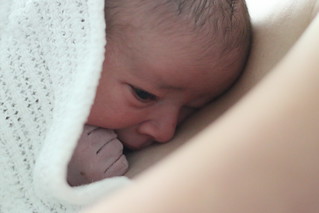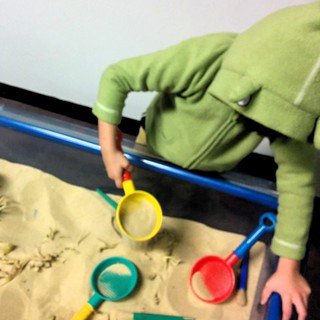This year is my son’s last year before he begins full time schooling in 2015. Welcome to our year of child-focussed activities in Sydney.
I’m posting out of order: the SEA Life Sydney Aquarium and Skyzone are waiting. But I thought I’d get Wet n Wild Sydney up while their season passes are still on sale (I believe sales end December 24).
Spoiler: we really liked it! Much more than most reviews of Wet n Wild would have you expect.
All that bad press
Let’s talk about the negatives you may already know about.
Entry is very expensive and pretty much everything else is extra. Lockers? $10. (Oh, but the enticing looking big ones conveniently near the entrance? Those ones are $12.) There are a couple of rides that cost extra. You can’t bring your own food in unless it’s for a baby or for someone with special dietary needs. Food can easily come to $20 a head between a meal and snacks. Parking is $8 (if you pay at the park exit) or $10 (if you pay at the carpark exit). Etc etc. Budget something like 25% of your already plenty pricey admission again, more if you’re going alone.
The food is atrocious. It’s all gluggy, floppy burgers and chips cooked to equal floppiness. This links nicely to this supposedly being a kid-centric review (although really we were there because I like waterslides), in that V is a very fussy eater. When people picture fussy eaters, they tend to picture Wet n Wild’s menu: burgers and chips and chicken pieces. Yeah no, not really. V is almost entirely vegetarian and his emergency go-to foods are mostly various types of bread and baked goods. He does, luckily, eat chips, but we run into a lot of trouble at almost every “lowest common demoninator, give the kids a little treat Mum” place because of the meat. (This isn’t a review of Daydream Island, which is lucky because then I’d have to tell you about V trying to live for a week on Wet n Wild’s food. It was bad enough for seven hours.)
Wet n Wild’s food is actually not what I’d call expensive by Sydney eating-out standards: it’s about a $12 lunch. But it’s $12 that you have to spend on a burger and chips. Not impressed. Adult-wise, Andrew sized up the barista and decided that perhaps a mocha was best. She wasn’t wiping down the steam wand between uses.
Crowds are something that people complain about a lot. We went on a school term Friday rather than a weekend for that reason, and not an unseasonably warm day. Ride waits ranged from none to about 15 minutes, which is about the limit for a four year old. I think in future, we will probably plan to go on a weekday afternoon after school and take advantage of their cheaper post-3pm admission. (Even though there’s the new patrons coming in, the crowds were actually dropping way off from 2pm. We left at 5pm.)
I would be very very wary of ever going on a weekend, or in the school holidays. I’d also be wary of going on a day forecast to be hot: there’s some shade, but I think it wouldn’t be enough to beat off a Sydney scorcher. Weekdays. Afternoons. Mild weather.
Why it worked for us
Here’s one thing that gets negative reviews that I’m not complaining about for our family: the fact that they charge full admission for anyone who is 110cm tall or more, which includes a lot of four year olds. (V is about 115cm.) Don’t get me wrong, this would absolutely be annoying if you have any adult or tall child coming who can’t go on the rides or doesn’t want to, because they have no child carer or “limited rides” entry. You’re 110+cm? Full price for you. (I should note that the paths appeared wheel-accessible to me — we had a stroller with us but not an adult wheel user — and they do offer a discounted admission to people with disability cards and free carer admission in that case. Accessibility info here.)
But, for our family, they have us pegged, because here’s what I really liked about the park with a four year old: the rides don’t require that you can swim. I personally quite like being shot off the end of waterslides to sink or swim in a churning pool, but that’s because I can swim well. V cannot: he knows how to hold his breath when water hits his face and he can float and swim a few metres in a calm pool. I wouldn’t put him down a slide that ended in swimming in a churn pool yet if I wanted to see him again. So I had imagined that the day would involve a lot of staring longingly at the best slides while a parent went off to ride them.
But no. The Wet n Wild Sydney model is almost entirely that you go down the slides as a group on a huge raft. As long as you can hang on and follow instructions, you can ride. And the solo rides end in a very shallow long splash pool, so if you have the ability and reactions to lift your head up, you can breathe. So this made every ride for which V met the restrictions (some are minimum 120cm, and 360Rush is 120cm with a minimum weight of 35kg) accessible to him. A much better day than I had thought.
V is also a daring little kid, which is important, because after all, you are riding a raft on rapids. Carefully constructed rapids, yes, subjected to all kinds of safety modelling, under the eye of CCTV, but your kid’s hindbrain may not know that. I think it could easily be a tough day with a nervous kid.
As it was though, with a daring kid and stops for snacks and calming, we ended up spending seven hours there, much much longer than I’d planned, and when calculated at the hour level, the price comes down to similar to some of the other things I’ve reviewed.
Kid review
V’s favourite rides: “the racers!” The H2Go Racers were the second “grown-up” slides we took him on, which was a gamble because they’re solo, and in the second half of them, they’re also dark (Wet n Wild loves adding to the tension by having you ride in the dark). So some careful coaching went into what to expect, but it worked out well. Probably not a surprise for a child who can ski. The only issue with the Racers is that you win the race by, essentially, weight, and so Andrew and I worked out that we needed to wait for him to launch, then stand there and slowly count to ten before going ourselves, if he was to win. This wasn’t the staff’s favourite thing, they’re big on turnover.
That said, the staff were very comfortable with helping him. They launched him down the Racers because he’s a bit short to launch himself. They helped him out of the two person rafts and congratulated him. They’re very supportive of littler kids on the big rides.
He also enjoyed The Breakers (a two-person ride), where you go up a ramp with a water jet shooting you in the back before bumping down the slide, and volunteered himself and me for the Aqua Tube. I looked into it dubiously. “Buddy, you realise that this is entirely dark? And it’s going to be dark all the way to the end?” Sure, he said. And he seemed happy enough, but he didn’t volunteer to go on it again. Of the four-person rides, he enjoyed The Curler and Double BOWLSEye with Andrew but was too short for the rest.
We had expected to spend most of the visit in Wet n Wild Jr/Nickelodeon Beach, which is the children’s area with shallow slides and a little current they can float around in. As you can tell, we didn’t spend much time there, but V is still young enough to think that it was also pretty great. I think he would have been happy there if he was too short for the rest of the park, but probably this is the last year that would be true. (He’s 5 in January, so by the next season, he’ll be nearly 6.)
A (who is 11 months old and doesn’t walk yet) loves pools with Mama, but it turns out she doesn’t much like being sat in water without an adult to hold. Her favourite activity was thus pulling up to stand against a fence. If she was writing this review she would say: six hours of boredom ONE HOUR OF THE BEST FENCE OF BESTNESS. She squeezed in a whole day’s worth of cooing and squealing during her fence time.
Safety-wise, we did manage to get a “tour” of their first aid facilities, courtesy of V taking a nasty fall climbing up the stairs to some slides, and grazing the skin along four of his ribs. It started off badly, when we asked that tower’s “Aquatic Safety” staffer for directions to First Aid and she sounded puzzled and didn’t know. She suggested we go ask Guest Services at the other end of the park. However, 50 metres into the walk, a different staff member stared at us lugging a crying kid and came over to ask us what was up. He was appropriately horrified that we had not got good directions or an escort, and he pulled out a whistle, blew on it, and flagged another staff member over to show us to First Aid. I had half expected them to have a bored GP on staff for the look of the thing, but it was a paramedic and a nurse, which is fine (and for emergencies and first aid probably more appropriate). They have a nice big space with a few beds, basically a doctor’s office. They bandaided V up and gave him stickers and no doubt watched him for all the danger signs that I don’t even know about for shock or concussion.
For an hour or so, he didn’t want to slide any more, and we worried that he’d cracked a rib perhaps, but then suddenly he was watching Andrew on the Racers and then he announced “I want to slide again!”
Adult review
I can’t resist a quick adult review, and in any case, I’m recommending this as a family outing. Which may include adult slide lovers.
First, as above, a disappointment: the group-oriented model means that there aren’t a lot of solo rides and they aren’t the most fun ones either. I think you can go up the towers with four-person rafts and get grouped at the top (rides on those towers are The Curler, Riptide, Double Bowlseye, Tantrum, T5 and Bombora) but you’re supposed to pair yourself up for the two-person raft slides (Half-pipe, The Breakers, Typhoon and Aqua Tube). The two solo rides are H2Go Racers and 360Rush.
For adults, I’d say it isn’t the best solo day out, but I’d go there with friends.
We only went on one ride that was pretty much tweens/teens/adults only (due to the minimum weight): 360Rush. They position 360Rush as the most extreme water ride (“leave your loose jewellery with your friends who are too chicken to ride!”) because it’s the (near) free-fall one: you fall about 15 metres or so and then go around a 360° loop feet first. Andrew and I both did a 360Rush ride, and here’s our collective review: it’s over pretty damned quickly! Andrew’s report was pretty much: aaaaah, oh, now it’s over. Having heard that, I tried to pay attention, and so I got aaaah, huh I’m slowing, so that means this is the bit where I’m upside down, only I have no sense of direction, how strange, oh, now it’s over.
But that’s not to say it isn’t potentially scary. You wear a backboard (I guess to stop you flinging your head back and banging it), you get shut in a small capsule (I guess to position you safely, but also because they can find out if you’re too claustrophobic while it’s reversible), a voice counts down, and a trapdoor opens under your feet to drop you down. It’s all in the build-up. You need to be willing to trust in the machines. I’ve never dropped so fast, so I realised afterwards that I had a little bit of cartoon physics in my head, where I’d hover above the open trapdoor thinking “NOOOOOO”. But real physics doesn’t work like that. By the time you know the trapdoor is open, you’re about 5 metres below it.
It’s actually not a super-fun ride, because it’s so fast and there’s not a lot of sensory experience with it. The rush is good afterwards though. Assuming you’re OK with the fall and the confined space (and note: I am not normally especially thrilled about heights), it’s worth doing once so that you can downplay the experience to all your friends.
Summary
Cost: $79.99 for people 110cm+, $59.99 for people shorter than 110cm, age three and under is free. All 3yo+ admission is $49.99 after 3pm. Season passes from $119.99, so if you’re going more than once, you should probably buy one.
Recommended: yes, much more so than I’d dared to hope, but with the proviso that it’s even more expensive than the sticker price, and that you should pick a day that’s not going to be hot or crowded.
More information: Wet n Wild Sydney website.





















